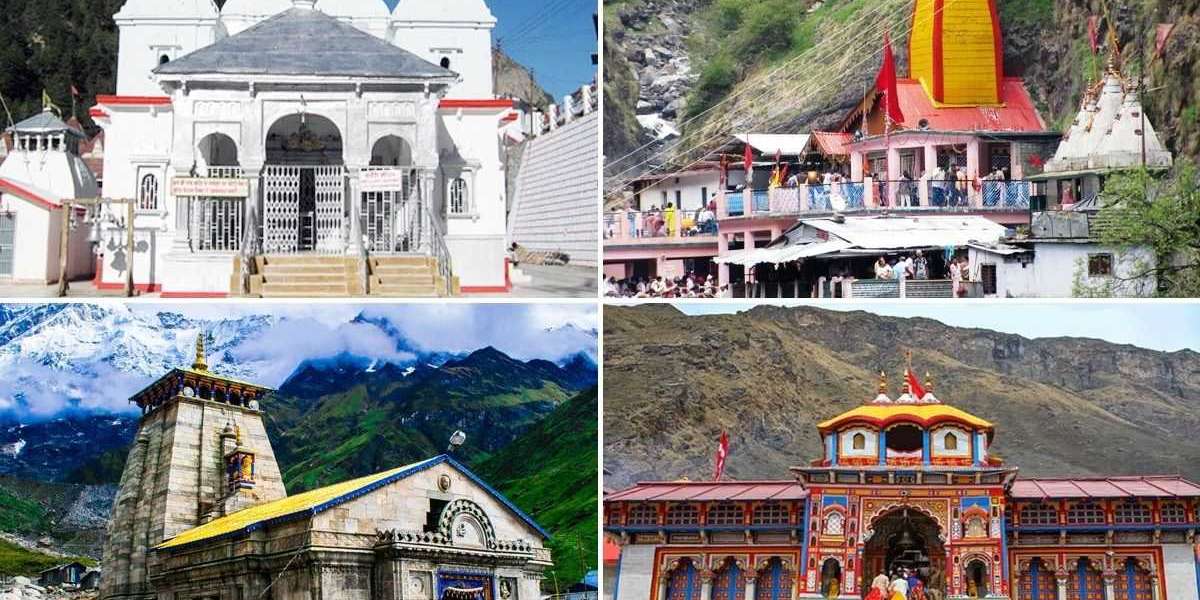The Char Dham Yatra, often referred to as the journey to the four abodes, is one of the most revered pilgrimages in Hinduism. It encompasses four sacred sites: Yamunotri, Gangotri, Kedarnath, and Badrinath, each with its own unique spiritual significance and history. This pilgrimage, nestled in the breathtaking Himalayas, is a profound journey that intertwines devotion, nature's splendor, and the rich tapestry of Indian culture.
The Significance of Char Dham Yatra
Spiritual Essence
The Char Dham Yatra is believed to cleanse the soul, wash away sins, and lead one towards moksha (liberation). Each of the four sites represents a different aspect of the divine, offering pilgrims a holistic spiritual experience. The journey is not just a physical trek but a metaphorical path to self-discovery and inner peace.
Historical and Mythological Background
The origins of Char Dham Yatra are deeply rooted in Hindu mythology and history. Adi Shankaracharya, the great 8th-century philosopher and reformer, is credited with establishing the pilgrimage to promote the Vedic culture and spiritual unity among Hindus. Each site has its own mythological tales, often involving the gods and goddesses of Hindu pantheon, making the pilgrimage a walk through sacred lore.
The Four Sacred Sites
Yamunotri
Yamunotri, the source of the Yamuna River, is the starting point of the Char Dham Yatra. It is dedicated to Goddess Yamuna, who is believed to be the sister of Yama (the god of death) and the daughter of the Sun God, Surya. The temple, situated at an altitude of 3,293 meters, is surrounded by the stunning Garhwal Himalayas.
The trek to Yamunotri is filled with picturesque landscapes, lush greenery, and the soothing sound of the Yamuna River. Pilgrims often bathe in the thermal springs of Janki Chatti before offering prayers at the Yamunotri Temple, seeking blessings for a smooth journey ahead.
Gangotri
Gangotri, the source of the sacred Ganges River, is the next stop. It is dedicated to Goddess Ganga, who descended to Earth to purify the souls of the ancestors of King Bhagirath. The Gangotri Temple, located at an altitude of 3,100 meters, stands amidst the serene backdrop of the Himalayan peaks.
The journey to Gangotri includes a visit to the Gaumukh Glacier, the actual source of the Ganges, situated about 18 kilometers from the temple. Pilgrims offer prayers and perform rituals to honor the river that is considered the lifeline of India, symbolizing purity and sanctity.
Kedarnath
Kedarnath, dedicated to Lord Shiva, is one of the most revered and challenging parts of the Char Dham Yatra. The temple is located at an altitude of 3,583 meters, near the Mandakini River, against the stunning backdrop of the Kedarnath Range.
According to legend, the temple was built by the Pandavas from the Mahabharata to seek forgiveness for their sins after the Kurukshetra War. The trek to Kedarnath is arduous, often testing the endurance and faith of pilgrims. Despite the challenges, the spiritual ambiance and the divine presence of Lord Shiva draw thousands of devotees each year.
Badrinath
Badrinath, dedicated to Lord Vishnu, is the final destination of the Char Dham Yatra. Situated at an altitude of 3,133 meters on the banks of the Alaknanda River, the Badrinath Temple is surrounded by snow-clad peaks and the beautiful Neelkanth Mountain.
The temple's legend involves Lord Vishnu meditating under a Badri tree (Indian date tree) for thousands of years. Badrinath is also part of the larger Bada Char Dham, which includes Puri, Rameswaram, and Dwarka. The temple's rituals, the vibrant festivals, and the serene environment offer pilgrims a divine culmination to their spiritual journey.
The Journey and Its Challenges
Physical and Mental Preparation
The Char Dham Yatra is not for the faint-hearted. It requires physical endurance, mental strength, and unwavering faith. Pilgrims often prepare months in advance, engaging in physical training and spiritual practices. The high altitudes, unpredictable weather, and rugged terrains add to the pilgrimage's challenges, making it a true test of devotion.
Modern Amenities and Accessibility
In recent years, the Indian government and various religious organizations have made significant efforts to improve the infrastructure and accessibility of the Char Dham sites. Roads have been improved, helicopter services are available, and accommodations have been upgraded to ensure the safety and comfort of pilgrims.
The Transformative Experience
Personal Reflections and Spiritual Growth
For many pilgrims, the Char Dham Yatra is a transformative experience. The journey through the majestic Himalayas, the sacred rivers, and the ancient temples fosters a deep connection with the divine. It offers moments of introspection, spiritual growth, and a profound sense of peace.
Community and Cultural Exchange
The pilgrimage also fosters a sense of community and cultural exchange. Pilgrims from diverse backgrounds come together, sharing stories, experiences, and a common goal of spiritual fulfillment. This cultural mosaic enriches the journey, making it a celebration of India's spiritual and cultural heritage.
Conclusion
The Char Dham Yatra is more than just a religious pilgrimage; it is a sacred journey towards spirituality and faith. It is an embodiment of the rich tapestry of Hindu beliefs, the awe-inspiring beauty of the Himalayas, and the timeless quest for divine connection. For those who embark on this journey, it is a path to enlightenment, inner peace, and a deeper understanding of the eternal truths of life.







